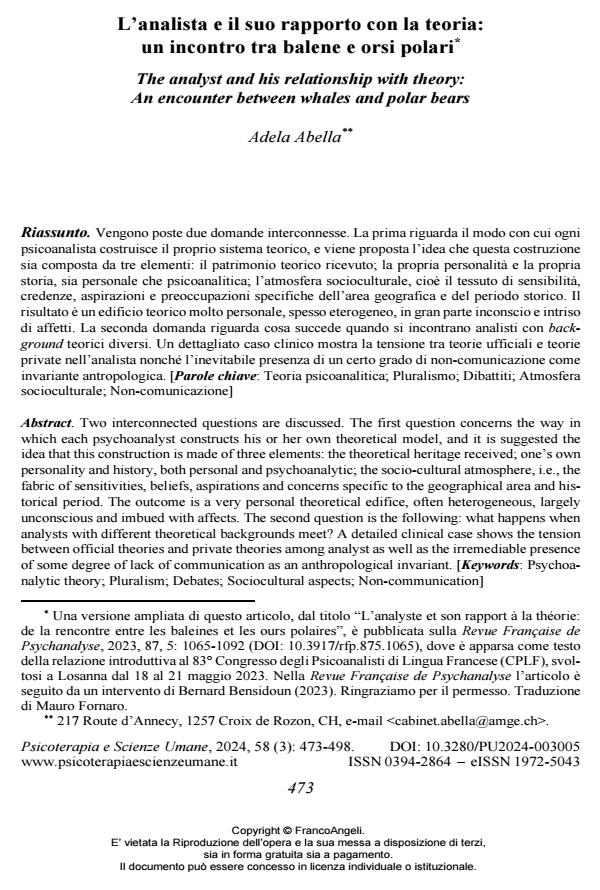L’analista e il suo rapporto con la teoria: un incontro tra balene e orsi polari
Titolo Rivista PSICOTERAPIA E SCIENZE UMANE
Autori/Curatori Adela Abella
Anno di pubblicazione 2024 Fascicolo 2024/3
Lingua Italiano Numero pagine 26 P. 473-498 Dimensione file 125 KB
DOI 10.3280/PU2024-003005
Il DOI è il codice a barre della proprietà intellettuale: per saperne di più
clicca qui
Qui sotto puoi vedere in anteprima la prima pagina di questo articolo.
Se questo articolo ti interessa, lo puoi acquistare (e scaricare in formato pdf) seguendo le facili indicazioni per acquistare il download credit. Acquista Download Credits per scaricare questo Articolo in formato PDF

FrancoAngeli è membro della Publishers International Linking Association, Inc (PILA)associazione indipendente e non profit per facilitare (attraverso i servizi tecnologici implementati da CrossRef.org) l’accesso degli studiosi ai contenuti digitali nelle pubblicazioni professionali e scientifiche
Vengono poste due domande interconnesse. La prima riguarda il modo con cui ogni psicoanalista costruisce il proprio sistema teorico, e viene proposta l’idea che questa costruzione sia composta da tre elementi: il patrimonio teorico ricevuto; la propria personalità e la propria storia, sia perso-nale che psicoanalitica; l’atmosfera socioculturale, cioè il tessuto di sensibilità, credenze, aspira-zioni e preoccupazioni specifiche dell’area geografica e del periodo storico. Il risultato è un edificio teorico molto personale, spesso eterogeneo, in gran parte inconscio e intriso di affetti. La se-conda domanda riguarda cosa succede quando si incontrano analisti con background teorici diversi. Un dettagliato caso clinico mostra la tensione tra teorie ufficiali e teorie private nell’analista nonché l’inevitabile presenza di un certo grado di non-comunicazione come invariante antropologica.
Parole chiave:Teoria psicoanalitica; Pluralismo; Dibattiti; Atmosfera socioculturale; Non-comunicazione
Adela Abella, L’analista e il suo rapporto con la teoria: un incontro tra balene e orsi polari in "PSICOTERAPIA E SCIENZE UMANE" 3/2024, pp 473-498, DOI: 10.3280/PU2024-003005